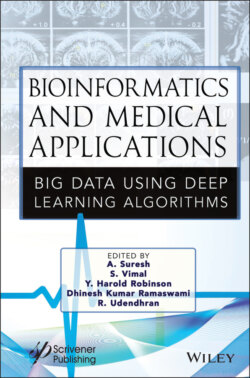Читать книгу Bioinformatics and Medical Applications - Группа авторов - Страница 83
3.6 Future Implications
ОглавлениеNon-supervised algorithms will play a major role in proteomics and genomics applications, as they can be run regardless of the time consumed in the computational platform; we have to bear in mind that, in most cases, the time they will take to search a specific pattern is unknown since the algorithms are non-linear metrics, and therefore, it is not possible to scale the processing time.
All non-supervised algorithms do not depend on any human intervention, so they run freely on a platform until they cast some conclusion. These processes may well be supported by a Hidden Markov Model (HMM) that enables the total control of all processes.
On the other hand, we consider that it will be necessary to reassess the metrics of the prediction programs, to explore differently the evaluation of proteins, both those stored in databases, and those identified in organic fluids that require a quick evaluation.
Metrics may also thoroughly explore only one characteristic and not several, like the method here presented, as we think it will be essential in the analysis of the new generation of algorithms, i.e., if the metric yields a number, it is very little information it provides; however, if it gives a vector, or a matrix, then the information can be considered exhaustive.
The proteomic and genomic for the production of pharmaceutical drugs will rapidly change to the design of biochips that will assess the proteins in organic fluids; this is a very important task, particularly for the latent threat the Coronaviridae family represents to humans due to its ability to disseminate and mutate.
A final observation about this subject is the advantage of the stochastic algorithm over the deterministic algorithm. Although the latter is more precise, they hardly offer any practical solution when the number of factors is large since the prediction of a biological microorganism is a multifactorial phenomenon, a deterministic algorithm will require huge memory and processing speed. Therefore, they will hardly provide a practical solution, as they will face the limitations of any computational architecture.
On the other hand, the stochastic functions are linear, which means that when evaluating multiple variables, the complexity will not increase, so these functions only give a probability value associated with the result, i.e., the associated value will be in the range between 0% a 100%.
